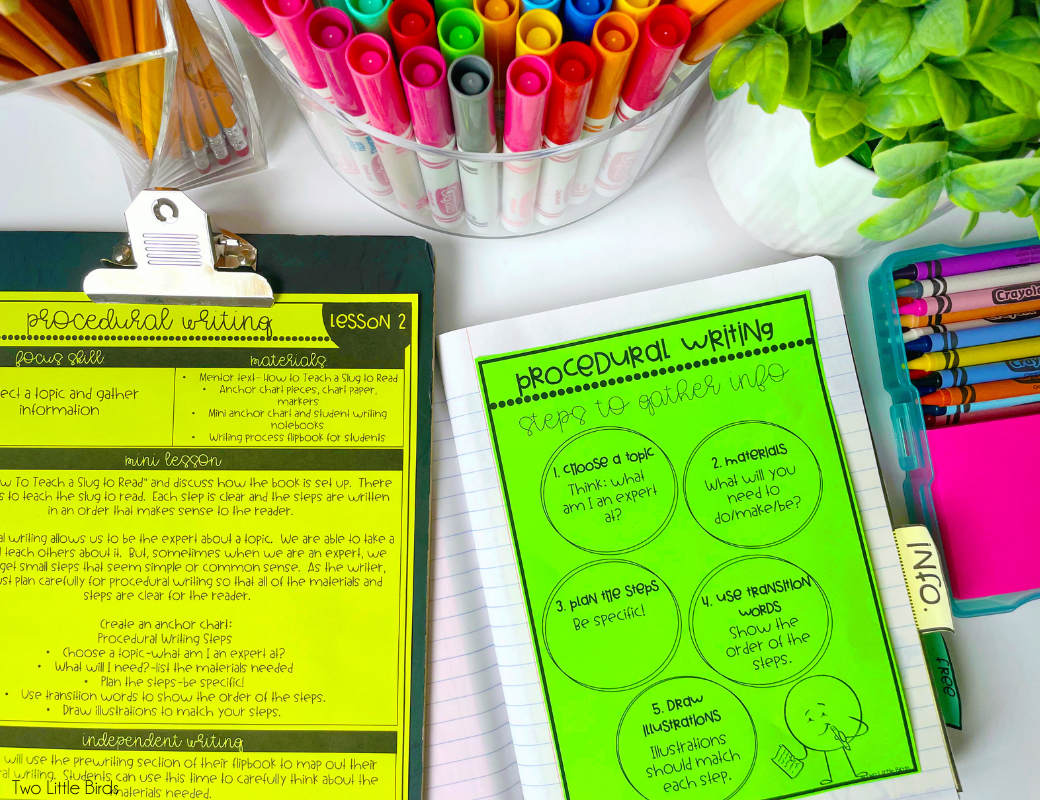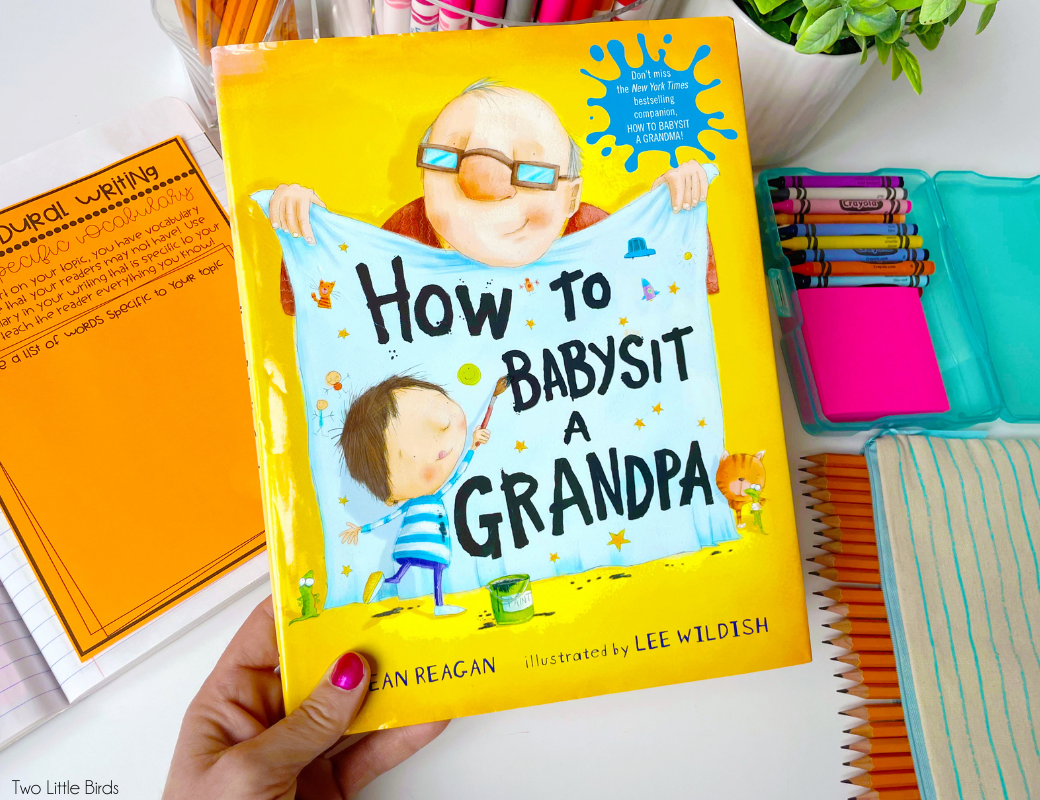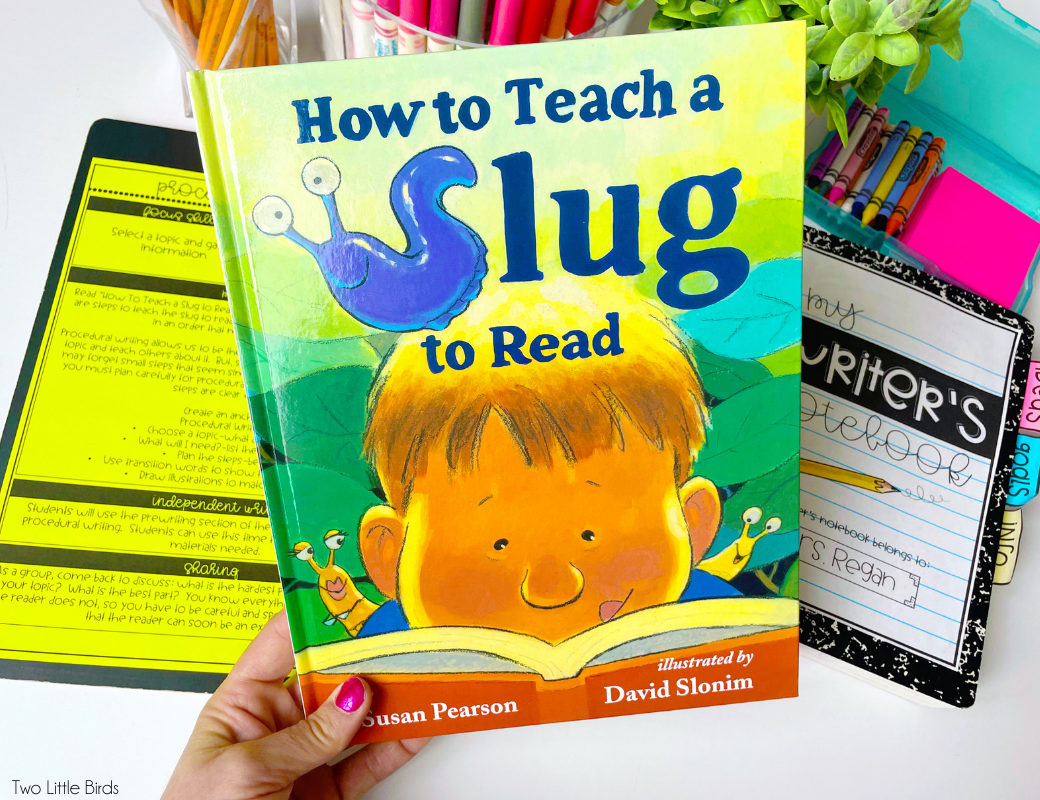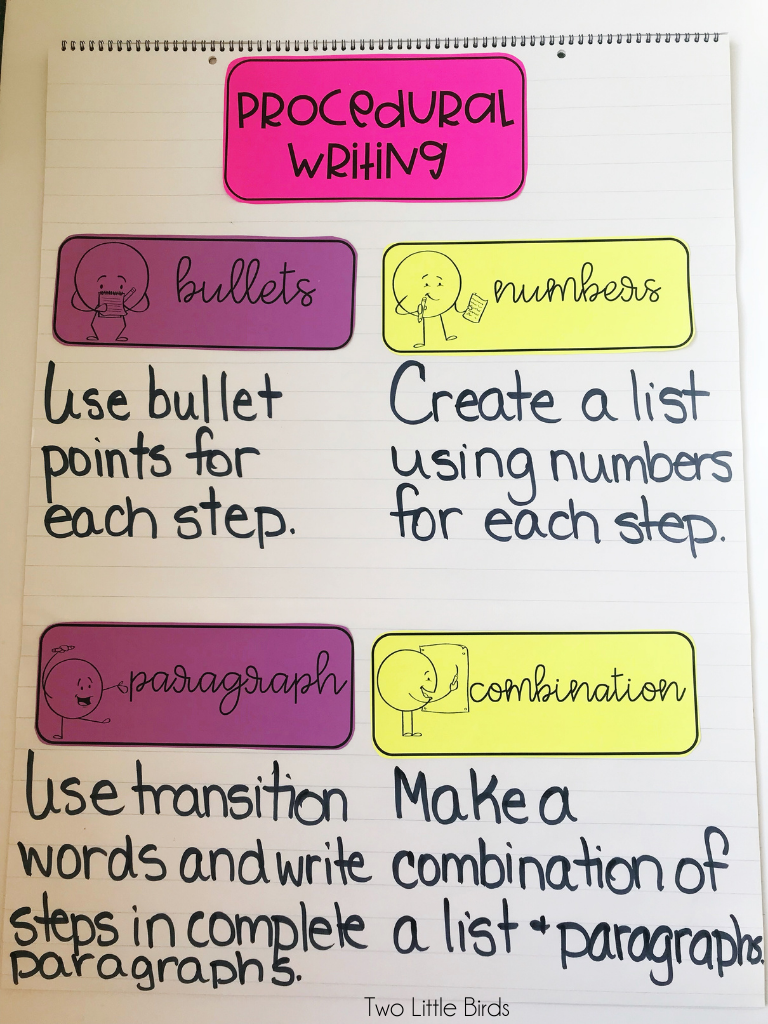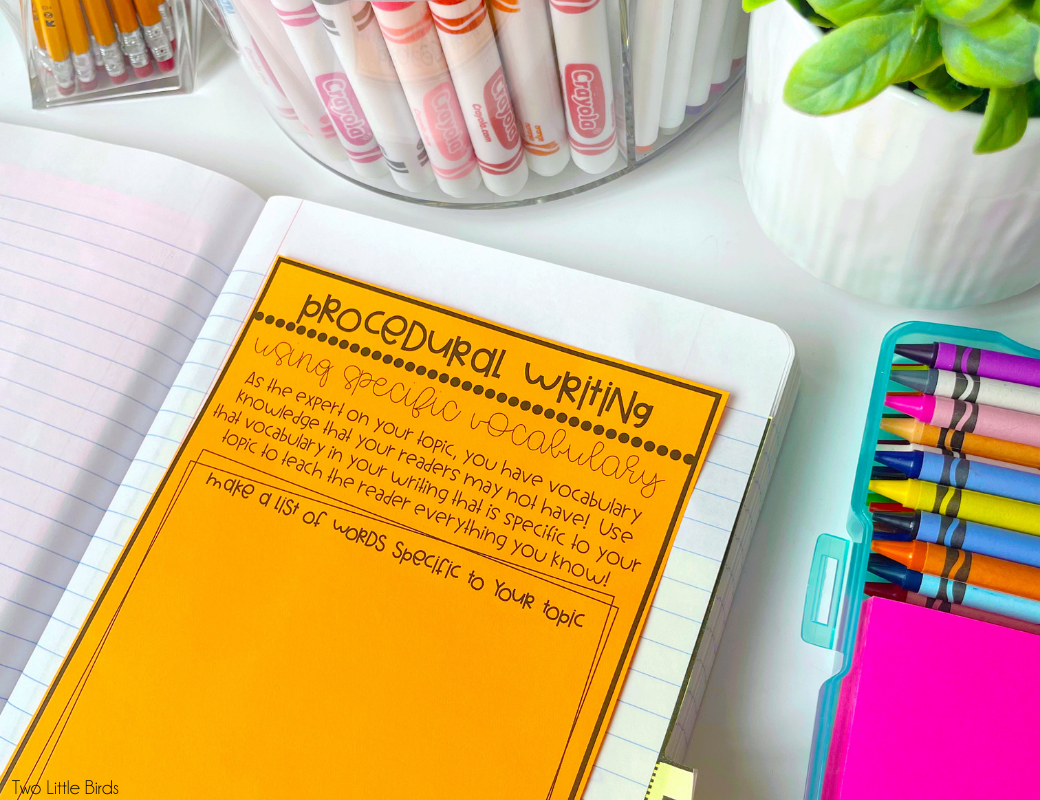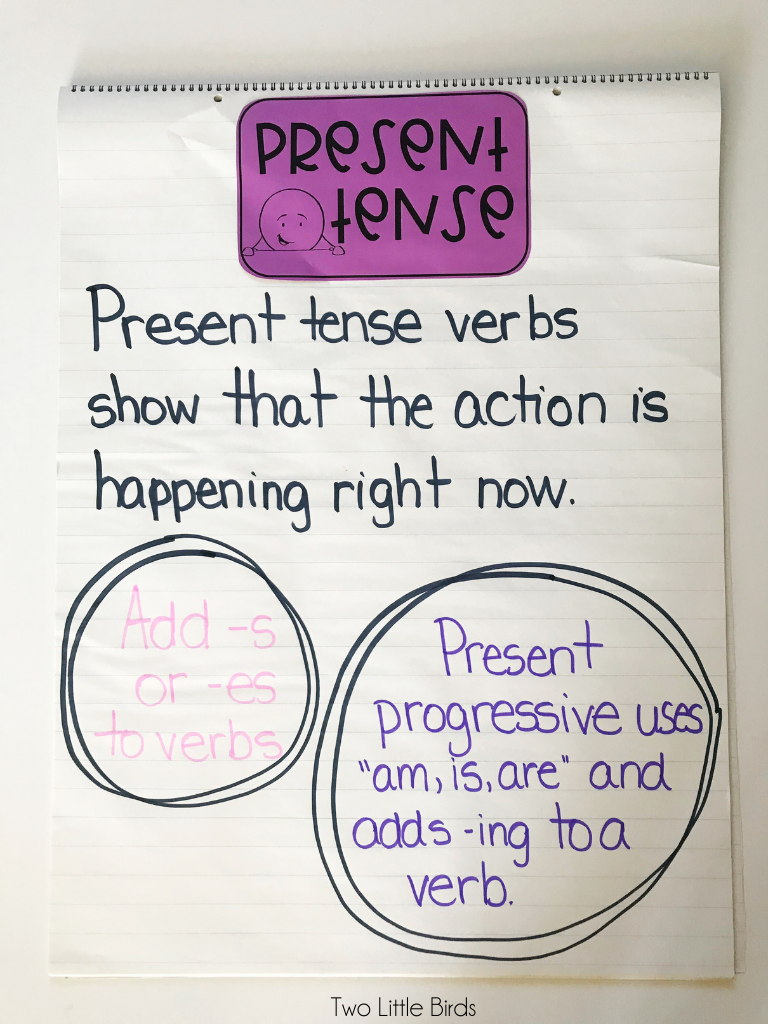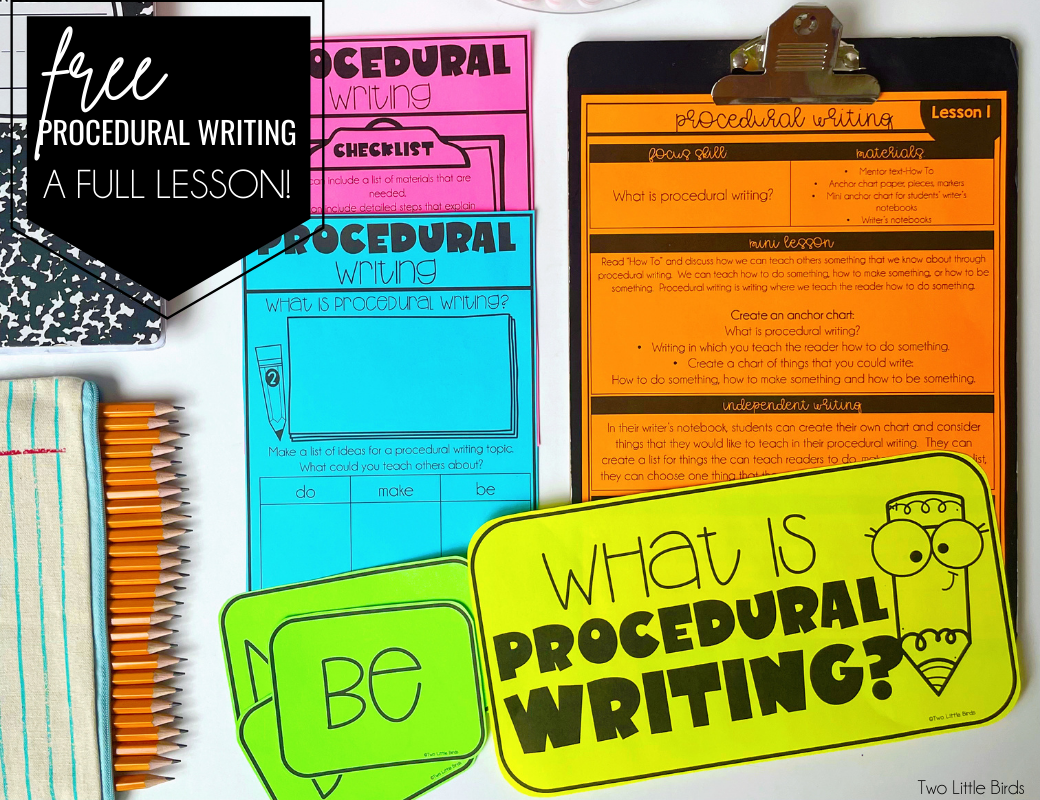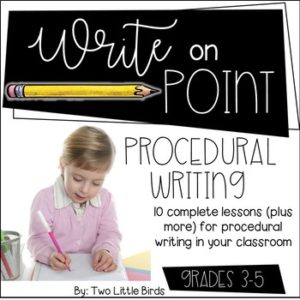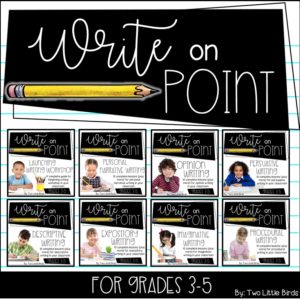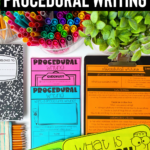Teaching procedural writing is such a fun writing genre to teach. Kids come in contact with procedural texts all the time, they just may not know it! Their homework directions, a recipe, directions for their favorite games, a to-do list from mom…our students are already immersed in procedural writing on a daily basis. And when they begin their own procedural writing, kids are always excited to share their expertise. They gain confidence in themselves as writers when they can choose a topic and write about something that they are good at. With purposeful mini-lessons, meaningful anchor charts, and mentor text used to model the author's craft, you will be prepared to help your students plan and create an amazing work of procedural writing on their own.
Carefully developing mini-lessons that will help students as they write on their own is an important part of planning your procedural writing unit. Here are a few ideas as you are planning to teach procedural writing.
1. What is Procedural Writing?
Procedural writing teaches someone how to do something, make something, or be something. Students have the chance to teach their readers something that they know and know well. They love having the chance to be “the expert.”
Students can create their own chart and consider things that they would like to teach in their procedural writing. They can create a list of things they can teach readers to do, make, or be. From this list, they can choose one thing that they would like to be the topic of their writing.

2. Selecting a topic and gathering information
Procedural writing allows students to become an expert on a topic. They are able to take a topic and teach others about it. But, sometimes when they are an expert, they may forget small steps that seem simple. While they are so familiar with the topic, the step may seem like it is just common sense. As the writer, they must plan carefully for procedural writing so that all of the materials and steps are clear for the reader.
Create an anchor chart together:
Procedural Writing Steps
- Choose a topic-what am I an expert at?
- What will I need?-list the materials needed
- Plan the steps-be specific!
- Use transition words to show the order of the steps.
- Draw illustrations to match your steps.
Carefully planning each step of the procedural writing process will help as students begin their writing. Incorporating all of these elements in a clear and concise way will keep the reader informed and interested in the writing.
3. Determining the Format
Procedural writing can be written in different formats and as the writer, students must decide which works best for their topic. Share examples of writing written in list form, numbered steps, bullets, or paragraphs. A few of my favorite books to share are “How to Babysit a Grandpa” and “How to Teach a Slug to Read.” The steps are numbered in “How to Teach a Slug to Read” and in “How to Babysit a Grandpa” the steps are broken into small lists with bullets. Each one is very specific in the steps given, but they are written in different formats.
Using sticky notes, students can begin to draft their procedural writing. Encourage students to be specific with their steps. Remember, they are the expert and know all about the topic, but the reader does not! Students can work to carefully write their steps in a format where each step is clear and specific. Sticky notes can be helpful because they can see each step and move them around to create an order that makes sense.
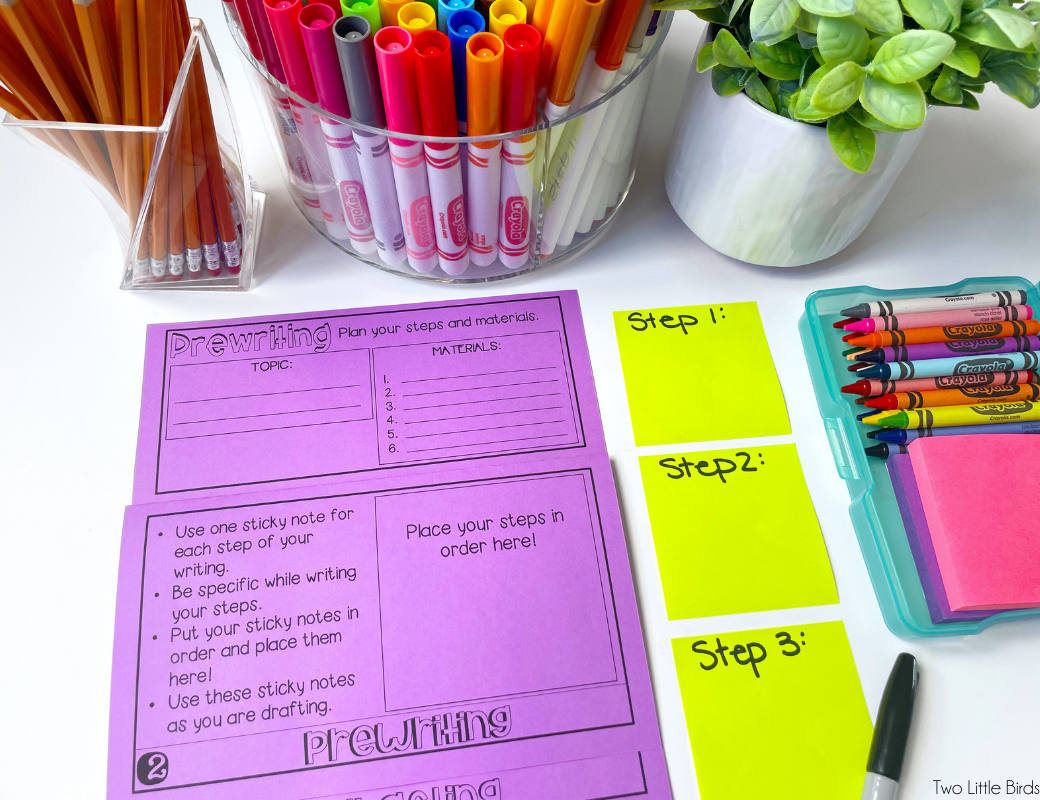
4. Using Specific Vocabulary
When writing a procedural text, students must choose specific words and phrases that relate only to their topic. Procedural writing may introduce new vocabulary to the reader that they did not know before! Students are teaching the reader, so they must use the knowledge that they have, which includes vocabulary that is specific to the topic.
Procedural writing also uses pronouns “you” and “your.” The writer is speaking directly to the reader and laying out the steps for them. Help students address their readers by using the pronouns “you and your.”
Create an anchor chart:
- Give each student a sticky note and ask them to write down a word that is specific to their topic. This does not need to be a big, fancy word. How to ride a bike might include a word like handlebars or spokes. How to be a good friend may include a word like compassionate.
This is an opportunity for students to see that using specific vocabulary does not need to be difficult; when they’re the expert, it is using the words that they know! Students can add their sticky notes to the anchor chart to create a fun anchor chart full of specific vocabulary. Depending on the time that you have for your mini-lesson, students can add more than one word or even add vocab from the mentor text you’ve chosen.
Students can make a list of words that is specific to their topic. Once students have created a list, they can continue to work on drafting their writing.
5. Writing in Present Tense
When students write procedural text, they should write in the present tense. Procedural writing is written as if it is happening RIGHT NOW!
Create an anchor chart:
- Present tense verbs show that the action is happening right now.
- Add -s or –es to verbs (cuts, runs, cooks)
- Present progressive uses “am, is, are” plus adds –ing to a verb (is cutting, am running, are cooking)
Having your students share and present their procedural writing is such a great way to get them excited and focused on their writing.
I hope you found some great ways to help your students through the procedural writing process.
Find the resources features in this post:
This post contains affiliate links




